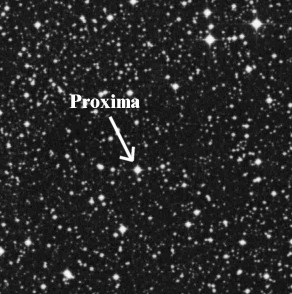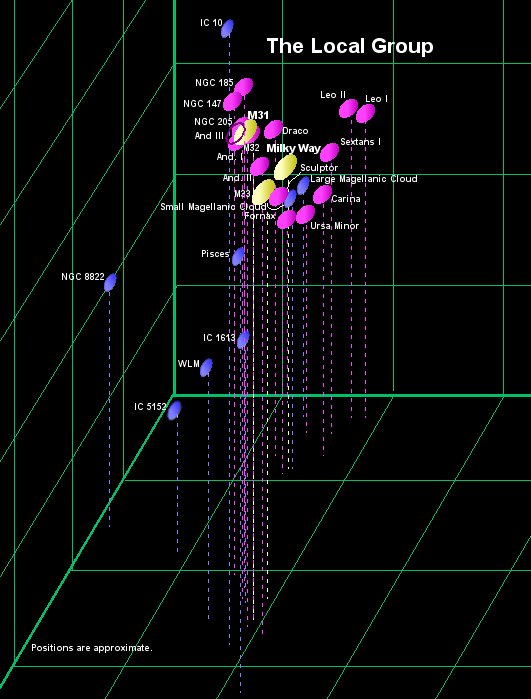  The Earth, our planet, 
is part of the solar system that contains eight other planets 
and the Sun 
The Sun is a star and there are many others like it in the universe. The closest star to our own is called Proxima Centauri. 
Together with approximately 1011 other stars they make up the Milky Way 
The Milky Way is one of about 1010 similar galaxies in the
visible
universe. Galaxies cluster into groups; our group is labeled the Local Group and contains about 30 galaxies 
Clusters of galaxies also cluster forming Superclusters. The main force holding all of these systems together is gravity. Each of these structures is formed out of smaller building blocks, so the higher the level of structure the bigger the structure gets. In other words, as you build a building out of bricks the building becomes bigger than the bricks. Cities become even bigger than the buildings that make it up. The size of astronomical building blocks is very large and sometimes becomes difficult to comprehend and measure with everyday units of measurement. Astronomers have created many more units of measurement for astronomical scaling. One of these units is called an Astronomical Unit (AU), the mean distance between the Earth and the Sun, 1.496 x 1011 km. Instead of using larger units like the AU, another way to make the size of the universe comprehensible is to scale the universe down to our everyday scientific units. Some models scale down to compare astronomical objects to the mass and radius of our Earth and Sun. Other models shrink the scale even further so that the diameter of our Sun is the size of a piece of fruit.  Back | Next |
 43
43